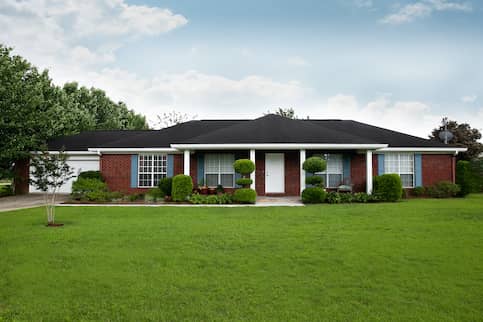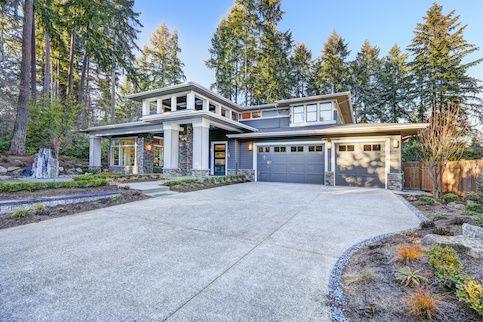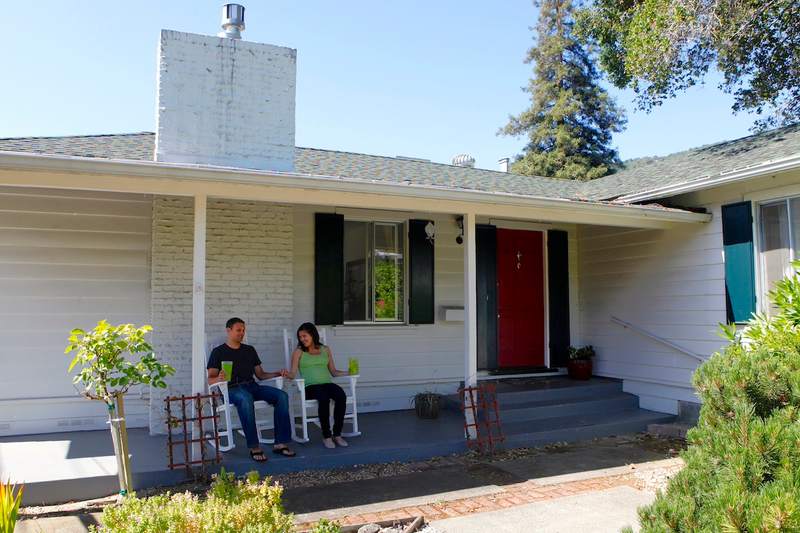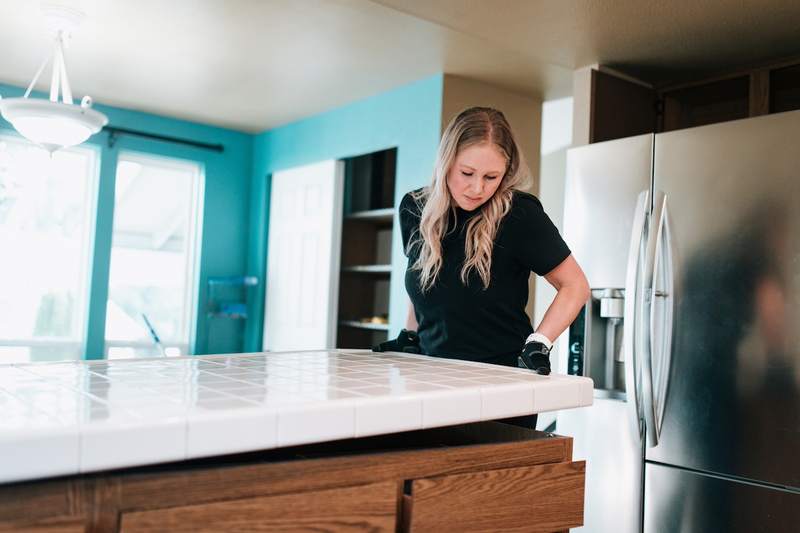When mortgage interest rates rise, home buyers often turn to adjustable-rate mortgages (ARMs). The reason? The initial interest rate on an ARM is typically lower than the rate on a fixed-rate 30-year or 15-year mortgage, allowing buyers to save money during the early years of a loan’s term.
But what if your credit score isn’t ideal, or if you can’t make a larger down payment? Can you take out a Federal Housing Administration (FHA) loan and benefit from an ARM’s low introductory interest rate? Yes, you can.
The FHA offers a variety of ARMs. And depending on your financial situation, an ARM may unlock the door to homeownership.
What Is An ARM?
An ARM is a 15-year or 30-year mortgage with a low fixed interest rate for an introductory period that ranges from 1 – 10 years. At the end of the fixed-rate period, the interest rate adjusts (the adjustment period), rising or falling based on the economic index the ARM is tied to. With most ARMs, the interest rate adjusts once a year until the borrower pays off the ARM, sells their home or refinances to a different loan.
See What You Qualify For
Buy A Home
Discover mortgage options that fit your unique financial needs.

Refinance
Refinance your mortgage to have more money for what matters.
Tap Into Equity
Use your home’s equity and unlock cash to achieve your goals.
FHA Adjustable-Rate Mortgages: A Closer Look
You can get an ARM insured by the Federal Housing Administration. It’s known as an FHA ARM, and it couples the benefit of an ARM’s low initial interest rate with the positives of an FHA loan’s flexible credit requirements.
Types Of FHA ARMs
The FHA offers five types of ARMs:
- FHA 1-year ARM: It has a fixed interest rate for the first year of the loan. After the fixed period ends, the interest rate can increase by one percentage point each year and rise to a maximum of five percentage points over the life of the loan.
- FHA 3-year ARM: It has a fixed rate for the first 3 years of the loan. After the fixed period ends, the interest rate can increase by one percentage point each year and rise to a maximum of five percentage points over the life of the loan.
- FHA 5-year ARM: It has a fixed rate for the first 5 years of the loan. After the fixed period ends, the interest rate can increase by one or two percentage points each year and rise to a maximum of five or six percentage points over the life of the loan.
- FHA 7-year ARM: It has a fixed rate for the first 7 years of the loan. After the fixed period ends, the interest rate can increase by two percentage points each year and rise to a maximum of six percentage points over the life of the loan.
- FHA 10-year ARM: It has a fixed rate for the first 10 years of the loan. After the fixed period ends, the interest rate can increase by two percentage points each year and rise to a maximum of six percentage points over the life of the loan.
Find out if an FHA loan is right for you.
See rates, requirements and benefits.
FHA ARM Requirements
As with all mortgages, you must satisfy certain requirements to qualify for an FHA ARM.
Credit Score
Depending on the size of your down payment, you’ll need a FICO® credit score of at least 580 or 500 to qualify for an FHA ARM.
Also, private lenders originate FHA loans and may set their own credit score requirements. This means that even if you meet the FHA’s minimum requirements, you may not be approved for an FHA loan if your FICO® credit score is too low.
Debt-To-Income Ratio (DTI)
Your debt-to-income ratio, or DTI ratio, measures the relationship between your income and debts. Mortgage lenders generally prefer that your monthly debts, including your new monthly mortgage payment, equal no more than 43% of your gross monthly income. Aim for a DTI ratio of 43% or lower to boost your chances of qualifying for an FHA ARM.
Down Payment
The FHA requires a down payment that’s at least 3.5% of a home’s final purchase price if your FICO® credit score is at least 580 and 10% if your credit score is between 500 – 579. The larger your down payment, the lower your interest rate tends to be.
Pros And Cons Of FHA ARMs
As with all mortgages, FHA ARMs have advantages and disadvantages.
Pros
- Lower initial interest rates: FHA ARMs have lower initial interest rates than fixed-rate loans, resulting in lower monthly mortgage payments during the early years of your loan term.
- Low down payment: You won’t need to make a large down payment with an FHA ARM. Depending on your credit score, you can make a down payment that’s 3.5% of a home’s purchase price.
- Lower credit score to qualify: You can qualify for an FHA ARM with a lower credit score. While lender requirements vary, the Department of Housing and Urban Development (HUD) qualifies borrowers for FHA loans with FICO® credit scores as low as 500.
Cons
- Higher rates after the adjustment period: Once your loan’s fixed period ends, it will enter its adjustment period. During this time, your interest rate will adjust once a year, usually rising higher, so your monthly mortgage payments will increase.
- Upfront mortgage insurance premium (UFMIP): FHA borrowers must pay an upfront mortgage insurance premium. The one-time expense is typically paid at closing and equals 1.75% of the total value of your loan. If you borrow $300,000, your UFMIP will cost $5,250.
- Annual MIP: Borrowers also pay an annual mortgage insurance premium (MIP). Annual MIP ranges from 0.15% – 75%, depending on the total loan amount and its term. You’ll pay MIP for 11 years if you make a down payment that’s larger than 10% of the home’s purchase price. If your down payment is less than 10%, you’ll pay MIP for the life of the loan.
FHA ARMs Vs. FHA Fixed-Rate Mortgages
The FHA also offers fixed-rate mortgages. Like an FHA ARM, you may qualify for a fixed-rate FHA mortgage with a 580 FICO® credit score, allowing you to make a down payment that’s 3.5% of a home’s purchase price.
With a fixed-rate loan, the interest rate on the mortgage never changes. If your 30-year fixed-rate mortgage has an interest rate of 6.5% in year one, it’ll have the same rate 29 years later. The benefit of a fixed rate is certainty.
But while you’ll never need to worry about your interest rate going up, you won’t benefit from the lower initial interest rates ARMs offer.
Can You Refinance An FHA ARM?
You can refinance from an FHA ARM to a standard fixed-rate mortgage. Many homeowners do this before their ARMs reach the adjustable phase. This way, they get the benefits of lower monthly mortgage payments without the uncertainty of fluctuating interest rates.
To avoid paying private mortgage insurance on a conventional mortgage, you’ll need 20% equity in your home. If you’re making your mortgage payments each month and the value of your home has increased, reaching the 20% equity threshold shouldn’t be a cause for concern.
Most lenders will hire an appraiser to determine the value of your home before they approve your refinance.
How To Apply For An FHA ARM
Contact a lender to start the process and apply for an FHA ARM. The lender will check your FICO® credit score and request proof of income.
Typically, borrowers provide lenders with:
- Two recent pay stubs
- 2 months of bank account statements
- Income tax returns for the past 2 years
- W-2 forms for the past 2 years
You may also need to provide proof of employment. Typically, this involves your lender reaching out to your employer to verify your position, annual salary and years at the job.
Once your lender has gathered all your information, your application will go through the underwriting process to determine whether your credit and finances qualify you for the loan.
The Bottom Line
An FHA ARM can provide lower monthly mortgage payments for several years. Just make sure you can afford to make larger payments if interest rates rise when the loan enters its adjustment period.
Find out if an FHA loan is right for you.
See rates, requirements and benefits.

Dan Rafter
Dan Rafter has been writing about personal finance for more than 15 years. He's written for publications such as The Washington Post, Chicago Tribune and Wise Bread.












